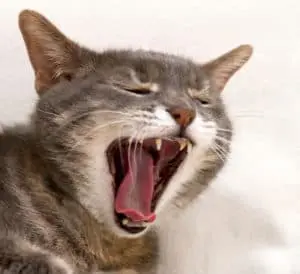
But what about our pets? Did you ever stop and consider how good oral health is vital so that our furry friends can live long and healthy lives?
In this short blog, we’re going to discuss why dental care for cats is important, how often they should be seen by a professional, and how you can keep their pearly whites shiny and clean at home.
Key Facts About Dental Health in Cats
- Cats are uniquely prone to developing periodontal disease and oral infections. This is a very big health risk because these conditions can disrupt organ functions leading to serious illness or premature death.
- Cats must have their teeth professionally examined and cleaned once per year to ensure that nothing is amiss in their mouths.
- Brushing a cat’s teeth each day is an essential component of maintaining good oral health. However, it takes time to warm them up to the process if they weren’t exposed to it as kittens
Why is cat dental care important?
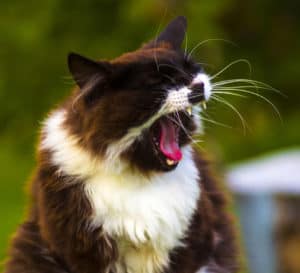
In the wild, cats are able to keep their mouths clean by gnawing on hard surfaces such as bones. However, domesticated cats don’t have many of these same opportunities. Instead, domestic cats’ mouths tend to be rife with bacteria, debris, and plaque that builds up.
These substances (plaque) then harden over time into something called tartar which can severely irritate their gums. This is not unlike the same process with a human. Once tartar has built up, the pain and inflammation it causes can make it uncomfortable for your cat to eat or drink. Eventually, tartar buildup can lead to more serious conditions such as gingivitis, periodontal disease, and even tooth loss.
If left untreated, serious tartar scaling can become irreversible and require painful and costly tooth extractions to alleviate any discomfort. In rare cases, the bacteria from this buildup can enter your cat’s bloodstream and damage their vital organs. This is the driving force behind the veterinary community taking an increasingly firm stance regarding a pet owner’s responsibility to be proactive with their cats’ dental health.
In his discussion with the team over at Texas A&M University’s Vet School, Dr. J.R. Dodd echoed this sentiment, stating: “Taking care of your pet’s mouth and keeping it nice and healthy can help the animal live longer. Good oral hygiene can help prevent diseases or secondary infections, such as liver, heart, kidney, and joint disease from bacteria originating in the mouth and spreading through the body via the bloodstream. A dog or cat’s teeth need to be well taken care of and treated with respect.”
Does your cat need to have its teeth professionally cleaned?

One example of a potential hidden danger lurking in your cat’s mouth are feline odontoclastic resorptive lesions (FORL). These lesions act like little cavities at the spot where the tooth and gum line meet. Over time, these lesions will cause the affected tooth to have its roots resorbed, which is very painful. Unfortunately, these lesions can only be detected with x-rays.
Additionally, this annual checkup will enable your vet to determine the extent of any existing issues in your cat’s mouth and plan for how to mitigate the progress. If your cat is already being treated for things like gingivitis or periodontal disease, this checkup will also allow your veterinarian to evaluate the treatment’s progress and recommend changes if necessary.
However, you shouldn’t wait until your cat’s annual trip to the dentist to start treating your cat’s oral health as a priority. Instead, you will need to regularly inspect your cat’s mouth and make teeth brushing to be part of your normal cat care routine.
What to look for when checking a cat’s mouth at home
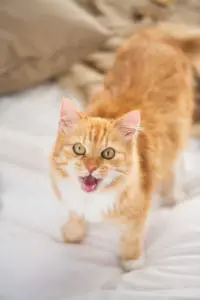
Unfortunately, most cats do not enjoy the sensation of someone rooting around in their mouth. Would you? While this is the case, you still need to check. But what should you be looking for when you check your cat’s mouth, anyway?
Well, there are a few tell-tale signs that you should be on the lookout for when you check your cat’s mouth.
Tooth Decay
Luckily, it’s not too hard to tell when your cat has symptoms of tooth decay.
Healthy cat teeth are a lot like healthy human teeth. A healthy cat’s teeth should appear clean, white, and devoid of any chipping, breakage or discoloration..
On the other hand, a cat suffering from tooth decay might have stained teeth, chips missing from their teeth, a whole lot of gunk built up around the base of their teeth and/or really stinky breath!
Signs of Gum Disease
Although often overlooked, practicing proper gum hygiene is an essential part of maintaining your cat’s oral health.
Unfortunately, gum disease (also known as periodontal disease) is an exceedingly common condition in cats and dogs alike. In fact, the majority of cats will present with symptoms of gum disease by the time they’re just three years old.
When checking your cat’s gums, look for signs of dramatic redness, swelling, or bleeding. These are all potential signs of gum disease in your cat. A healthy set of gums should look pink and lay flat with no signs of swelling.
Bad Breath

Bad breath in cats is called halitosis and, although we may have normalized it a bit, bad breath in cats can actually be a sign of gum disease or oral infection.
So, if your cat opens her mouth near you and it makes you want to cover your nose, or worse, it may be time for a deeper inspection.
How to Keep Your Cat’s Teeth Clean
So, now that you’ve inspected your cat’s mouth and determined his mouth could be cleaner. How should you go about actually doing that? How do you keep your cat’s teeth clean?
Well, as if we’ve said elsewhere on this blog, you’re going to have to do a lot of the same stuff you’d do to keep your own mouth clean! Namely by brushing the teeth every day, feeding a dental support diet, and giving some supplementary treats.
Brush Your Cat’s Teeth Every Day
We know; we can’t believe it either. But, unfortunately, you are going to have to brush your cat’s teeth every day if you want the absolute best chance at preventing plaque buildup.
Now, as we’ve said previously, most adult cats really don’t like having their mouths messed with. That’s why it’s imperative that you get your cat used to having its mouth touched by human fingers while they’re still kittens.
However, if you feel unable to safely brush your cat’s teeth, this is not an excuse to not do it. Instead, you will have to either take them to a veterinarian for formal cleanings more often, or you will have to ease them into the process.
Get Your Cat Used to the Touch

Now, proceed with building your cat’s tolerance to having their mouth touched. Do this by beginning to gently lift their lips for a few seconds. If they allow this, great! If not, reward them for what they will allow you to do. Repeat this process at least once per day until they put up no resistance to you touching their lips.
As their resistance fades, gradually increase the time spent lifting their lips. Be sure to supply treats along the way. Once they’ve become accustomed, begin trying to touch their teeth and gums for a few seconds while wearing gauze around your finger for protection. Again, only do this for as long as they’re comfortable and be sure to repeat this process daily until they don’t care that you’re touching their teeth.
After your cat has shown relative indifference to you touching their actual teeth and gums with your fingers, now you can switch out the gauzy finger for a soft-bristled toothbrush. Your cat may show some hesitation at first, but that’s okay! Just get them used to having the brush near their mouth at first. Then, as their comfort builds, begin applying a small dab of special cat toothpaste to the bristles and letting your cat sniff or lick it.
Cat Toothpaste

After your cat has become comfortable with having their teeth touched by the toothbrush and toothpaste, you should feel ready to begin brushing your cat’s teeth. To brush your cat’s teeth, place the brush bristles at a 45-degree-angle where the teeth and gums meet. Then gently brush the spot three to four times in an oval pattern. Complete ten short oval motions before moving your brush to a new spot in the mouth.
Once you’ve covered the entirety of their mouth, you’re done! Now you just have to do that… every day. Easy, right?
Feed Them a Diet that Supports Dental Health
Believe it or not, there are actually specific foods that you can give your cat which support dental health. In 1997, the Veterinary Oral Health Council (VOHC) was established to provide an independent way of evaluating and recognizing pet food that significantly reduced plaque accumulation so pet owners could know that what they’re buying would work.
The VOHC uses data collected during clinical studies to determine the product effectiveness at deterring plaque buildup. The VOHC then distinguishes products which pass its examinations with either a plaque- or tartar-control seal. To ensure your maximum protection from plaque buildup be sure to look for the VOHC seal.
Pick the Right Dental Chews
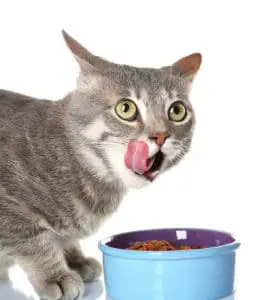
Choose a dental chew or treats that have been approved by the VOHC. They offer a significant degree of protection against plaque and tartar buildup, Especially when used in conjunction with daily brushing.
Of course, we don’t have to tell you to go the extra mile and check to make sure that what you’re giving your cat is good for them. After all, if you didn’t care about keeping your cat happy and healthy, you wouldn’t be reading this blog!
That’s why we hope you’ll be back to read more from Banixx’s blog and to learn about how to keep your feline friend feeling their best no matter what – even if it’s a million degrees outside or ever wondered WHY cats get hairballs?
Reference Sources:
https://vetmed.tamu.edu/news/pet-talk/dental-hygiene-in-dogs-and-cats/
https://www.hudsonanimalhospitalnyc.com/services/cats/cat-dental-care
https://vcahospitals.com/know-your-pet/cats-nutrition-and-periodontal-disease
Share this Post
Featured Post
Recent Posts
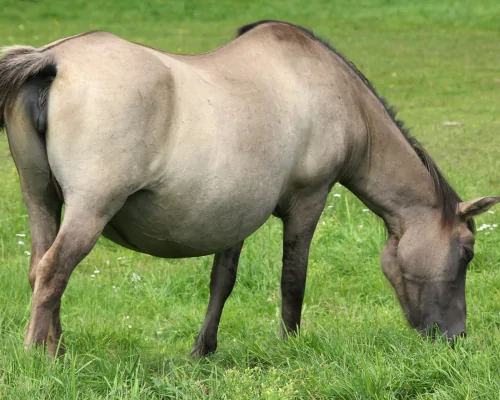
Managing the Mamas –Part 2 –The development process

Managing the Mamas: Part 1 – Preparing to Breed Your Mare

HOW MANY TOES?? Caring for the Polydactyl Cat
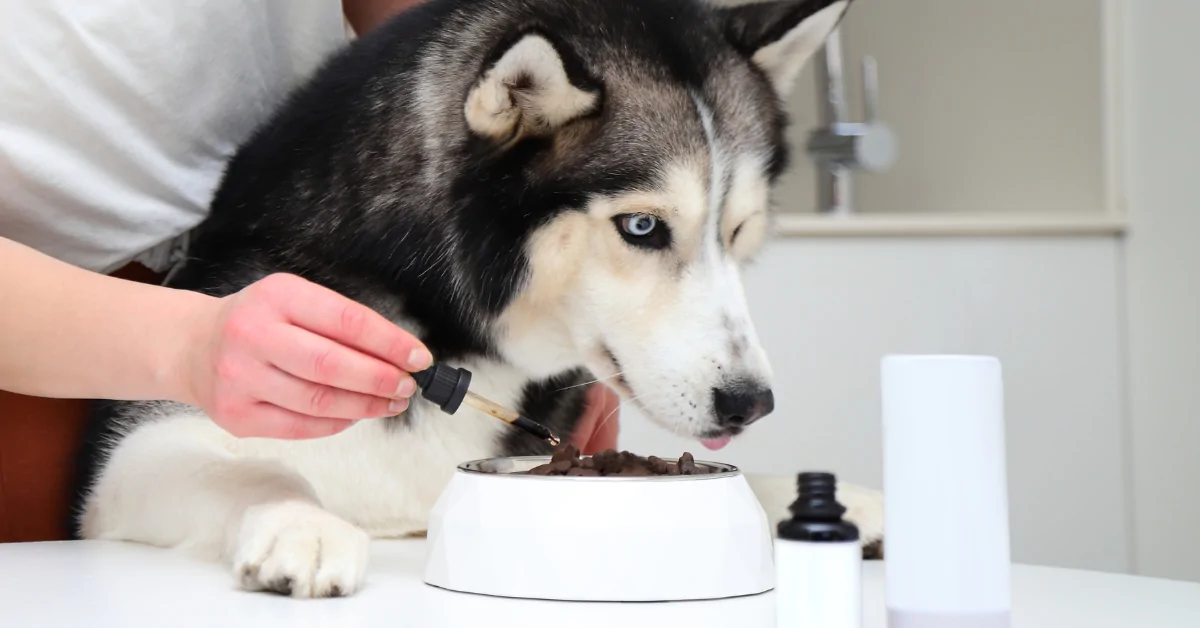
Do Dog Joint Supplements Actually Work?
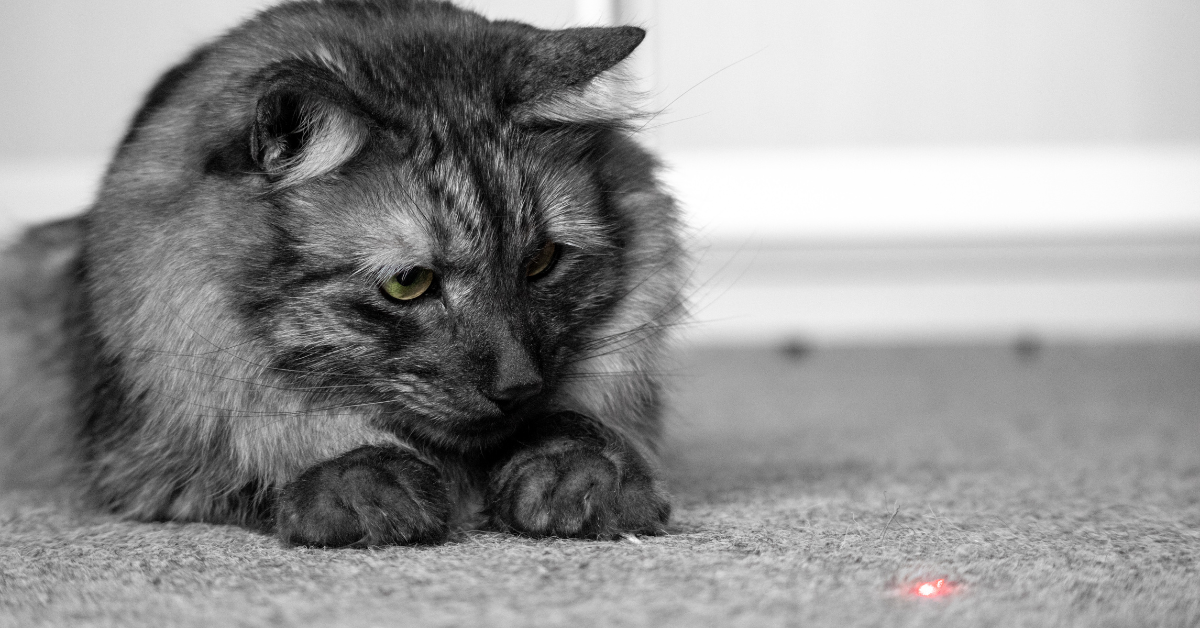
Are Laser Pointers Bad for Cats? or, are they Purr-e Fun?


